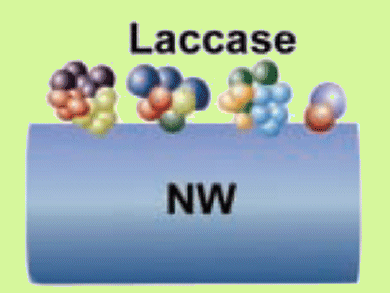The most abundant energy source for nanodevices for in vivo biomedical sensing is chemical and biochemical energy from biofluids containing glucose. Harnessing this energy could lead to self-powered devices for a range of applications.
Jing Zhu and co-workers, Tsinghua University, P. R. China, have used a single proton conductive polymer nanowire (NW) to convert chemical energy from biofluids into electricity, by using glucose oxidase and laccase as catalysts.
The NW was a Nafion®/poly(vinyl pyrrolidone) composite of typical diameter of 200–800 nm. The enzymes were immobilized at either end of the NW. When placed in contact with a biofluid, glucose was electrooxidized to gluconolactone at the anode and dissolved O2 was electroreduced to water at the cathode.
A single NW could generate an output power of 0.5–3 μW, which is sufficient to drive pH, glucose or photon sensors.

- Generating Electricity from Biofluid with a Nanowire-Based Biofuel Cell for Self-Powered Nanodevices
C. Pan , Y. Fang , H. Wu , M. Ahmad , Z. Luo , Q. Li , J. Xie , X. Yan , L. Wu , Z. L. Wang, J. Zhu,
Adv. Mater. 2010, 22.
DOI: 10.1002/adma.201002519



